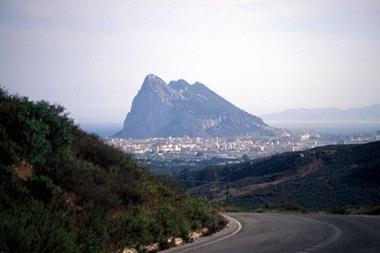Andrew Williams looks at the approaches some major EU states have taken in transposing the ELD into national law
Directive 2004/35/EC on environmental liability with regard to the prevention and remedying of environmental damage, commonly known as the Environmental Liability Directive (ELD), introduces the concept of ‘polluter pays’, under which identified companies must bear the cost of rectifying environmental damage to soil, water, protected species or protected habitats and take measures to prevent it resulting from their operations.
This article investigates progress towards transposing the ELD into national law in five of the largest EU member states, France, Germany, Italy, Spain and the United Kingdom. In doing so, it highlights some of the main characteristics of each law and seeks to provide a brief sense of the individual approach towards the design and delivery of environmental regulation in each country. Where appropriate, it also highlights any major environmental incidents that may have inspired that approach.
Main features of the directive The directive’s principal aim is to hold businesses financially liable for environmental damage caused by their activities, which should result in an increased level of prevention and more precautionary measures. Moreover, the ELD requires operators to take preventative actions where their activities pose an ‘imminent threat’ of environmental damage (ie where there exists ‘a sufficient likelihood that environmental damage willoccur in the future’).
The ELD employs two distinct but complementary liability regimes. Firstly, there is a strict liability-based regime that applies to operators carrying out hazardous activities as set out in Annex III and secondly, a faultbased regime that applies to all other business activities.
Wherever operators are found liable under the ELD, they are required to undertake a range of ‘remedial measures’, defined as ‘any action or combination of actions, including mitigating or interim measures to restore, rehabilitate, or replace damaged natural resources and/or impaired services or to provide an equivalent alternative to those resources or services as foreseen in Annex II.’
The transposition process
The ELD is a Framework Directive, and as such it leaves significant discretion to the member states in several important areas, including the allowance of state of the art and permit defences, the definition of biodiversity, scope, causation, financial security and the extent of operator liability, thus enabling stricter or weaker measures to exist from one member state to another.
Although transposition of the ELD and the drafting of legislation is still ongoing in some countries after the deadline of 30 April 2007, most EU member states have now enacted the directive. As of April 2009, only seven countries, (Austria, Finland, France Greece, Luxembourg, Slovenia and parts of the UK), have not finalised the transposition, although in most cases government bills or similar draft legislation has been or is being discussed and is expected to be adopted shortly. In general, insurance is the most popular instrument to cover environmental liability, followed by bank guarantees (Spain and UK) and market-based instruments (Spain).
France
In July 2003, the French Parliament established an environmental act, which laid the foundation for all future environmental regulation in the country. The act formally codified the ‘rights’ of the environment as enshrined in four overarching principles: the precautionary principle, the preventative principle, the principle of participation and the ‘polluter pays’ principle.
The adoption of the new environmental code meant that much of the necessary groundwork for the establishment of a national law of environmental liability had already been undertaken well in advance of the ELD transposition deadline. Even so, it was not until August 2008 that France finally adopted Law number 2008-757 ‘relative à la responsibilité environnementale et à diverses dispositions d’adaptation au droit communautaire dans la domaine de l’environnement’, which was the first step towards implementation of the ELD in the country. However, the nature of the domestic French legal process means that the adoption of a décret (decree) is still necessary for a complete transposition. This is not currently expected until the end of June 2009.
The French ELD legislation does not allow permit exemptions, but does include a provision allowing operators to apply for a ‘state of the art’ exemption. Moreover, France has not decided to enforce compulsory financial security and has adopted fault-based liability for environmental damage to protected species and habitats caused by ‘non-Annex III activities.’ In those cases of environmental damage caused by more than one operator, the national law applies liability on a proportional basis on the basis of the views of the competent authority.
“Most EU member states have now enacted the directive.
Germany
More than 20 years ago, a major environmental incident in the River Rhine sparked the beginning of the legal debate on environmental liability in the EU. In 1986, a major chemical leak at the Sandoz warehouse in Basel, Switzerland led to massive mercury pollution and the death of half a million fish throughout the river basin. In direct response to this ecological disaster, the European Parliament and Council of Ministers issued a resolution requesting the Commission to propose a regulation imposing civil liability for environmental damage to Rhine and other main transportation routes in the EU, a key precursorto the ELD.
On 14 November 2007 the German ‘Gesetz zur Umsetzung der Richtlinie des Europäischen Parlaments und des Rates über die Umwelthaftung zur Vermeidung und Sanierung von Umweltschäden’ (known for short as the ‘Umweltschadensgesetz’ or ‘Environmental Damage Act’) came into force, formally transposing the ELD in the country.
A key feature of the German legal system is that any of the 16 German Bundesländer has the power to modify the existing federal rules individually at the regional level through implementing provisions. So far there are no expected differences between the regions. Exemptions, whether based on ‘permit’ or ‘state of the art’ defences, are not allowed in the federal legislation. Furthermore, joint and several liability applies in cases of envoronmental damage caused by more than one
operator, with fault-based liability attached to environmental damage caused by ‘non- Annex III activities’ and strict liability for damage caused by genetically modified organisms (GMOs). The German act does not impose compulsory insurance or any other financial security on operators. However, it does apply retrospective liability for environmental damage caused from 30 April 2007 onward.
Italy
Legislation aimed at the prevention and control of accidents involving dangerous substances in the EU was significantly prompted by one notorious disaster in Italy’s past. In 1976, a chemical plant manufacturing pesticides and herbicides in Seveso, Italy accidentally released large amounts of poisonous dioxins into the air, contaminating 10 square miles of land and vegetation. Over 600 people were evacuated with as many as 2,000 treated for dioxin poisoning. As a result, in 1982, the Seveso Directive (Council Directive 82/501/EEC) on the major accident hazards of certain industrial activities was adopted.
In 2006, Italy adopted legislation that formally transposed the ELD into national law, becoming the first of the ‘major’ EU countries to do so. The Environmental Code-Legislative Decree No 152 of 3 April 2006 includes no measures on compulsory financial security but does allow state of the art and permit exemptions. Fault-based liability applies for cases of environmental damage occurring as a result of non Annex III activities, with proportional liability attached to cases caused by more than one operator. The domestic law also enforces protection to a significantly wider range of species and natural habitats than required by the ELD, meaning that, in Italy, liability for environmental damages extends beyond the scope of the directive.
Spain
On 25 April 1998, a tailing dam break at the Boliden mine near Aznalcóllar in southern Spain led to one of the most harmful environmental incidents in the history of the country. The rupture released around five million cubic metres of toxic tailings slurries and liquid, containing lethal levels of heavy metals. The accident devastated the local environment, contaminating a 40 km stretch of the Agrio and Guadiama rivers as well as vast swathes of surrounding farmland. In total, almost 40 tonnes of fish and around 100 vertebrates were killed, with approximately 5,000 geese and 20,000 water birds also seriously affected. Remedial activities required the excavation of 12m tonnes of contaminated soil and resulted in a total economic loss in the region of €400m.
The disaster was particularly damaging because the Doñana National Park is one of Europe's most important natural sites. It was declared a World Heritage site by UNESCO because of its unique eco-diversity, consisting of lagoons, marshlands, dunes, and scrub woodlands. It is also an important resting place for migratory birds and the accident occurred in the middle of the birdnesting season, which meant an increased risk for the bird population. Furthermore, the high concentration of toxic metals posed an alarming threat to the human population and the ecosystem.
It is perhaps partly because the Boliden incident still looms so large in the Spanish collective memory that, of the five countries analysed here, Spain has adopted the most stringent approach to the transposition of the ELD.
“In Italy, liability for environmental damages extends beyond the scope of the directive.
On 23 March 2007, Spain fully transposed the ELD into domestic legislation through Law 26/2007 – The Environmental Liability Act. As well as applying to species and habitats in Natura 2000 areas’ soil and water (as required by the directive), the law also extends the scope of protected habitats and species to include all flora and fauna species covered under national and regional law, as well as the entire Spanish coastline Spain has also adopted controversial (at least initially) provisions on mandatory financial security, not necessarily restricted to insurance products. Instead, operators may choose between different options including insurance, bank bonds and asset deposits. Financial guarantees will be compulsory by the end of April 2010, with the minimum amount to be determined by the competent authority according to the risk level and expected to range from a minimum of €300,000 up to a maximum of €20m. In other measures, state of the art and permit exemptions are allowed, although the state of the art defence is limited to remediation costs only and not prevention costs. Furthermore, the operator must pay all costs in every case, but is entitled to recover remediation costs from the public administration.
A key difference between Spain and the other countries covered here is that faultbased liability exists not only for habitats and species, but for all categories of environmental damage. Where cases of environmental damage are caused by more than one operator proportional liability will apply, provided an appropriate share can be estimated.
Similarly to Germany, the Spanish law also applies retrospective liability for environmental damage caused from 30 April 2007 onward. Moreover, variations in legislation are possible at a regional level.
However, no major differences are currently expected, with those that do occur likely to be mainly procedural in nature.
United Kingdom
In the UK, perhaps more than any other EU member state, the transposition of EU directives into domestic legislation is fraught with difficulties.
The legislative history of the country has meant that each constituent nation of the union has evolved its own separate legal system, often rendering the adoption of a uniform ‘UK-wide’ law impossible. Even so, after lengthy delays, Gibraltar, England and Wales have fully transposed the directive (in December 2008, February and April 2009 respectively). Scotland and Northern Ireland have still not fully transposed, but are expected to do so shortly.
In England, a regulation transposing the ELD (The Environmental Damage (Prevention and Remediation) Regulations 2009) took effect on 1 March this year. The scope of the English regulation is identical to the directive, with the addition of sites of special scientific interest (SSSIs) – extending strict liability to damage caused by non-Annex III activities to water, land, protected habitats and species. The extension of scope to include SSSIs is also in place in regulations in Wales and is anticipated in the forthcoming regulations in Scotland and Northern Ireland.
In common with most of the major EU countries (apart from Spain), the English (and, it is anticipated, other UK) regulations do not include any measures on compulsory financial security. Moreover, the permit and state of the art defences allowed under the directive have been adopted. In English multi-party causation cases, liability will be ‘joint and several’ but operators are permitted to recover all or part of the costs from any other person who also caused the damage. The English regulation also stipulates that damage caused by anact of terrorism (but not of war) is excluded.
In England, there will be no liability for ‘historic’ pollution – since the implementing regulations exclude any damage that took place before 1 March 2009 as well as damage that takes place afterwards but is caused by an incident, event or emission that took place before 1 March 2009. In Wales, operators will also be held liable for any environmental damage caused by genetically modified organisms (GMOs).
Conclusion
The adoption of the ELD will raise the standard of environmental protection across the EU and lend a welcome air of formality to an area of regulation that has previously been characterised by uncertainty.
The above analysis shows that, in some of the larger EU countries at least, the directive has now been largely implemented at the domestic level. It also highlights that some member states, notably Spain, have used the inherent flexibility in the ELD transposition process as a spur to adopting more stringent laws than they might have otherwise. However, the process has not been without its critics. In particular, many practitioners in the risk industry have pointed out that the ELD’s status as a Framework Directive has resulted in an overcomplicated system of national laws. According to a recent report on ‘Navigating the Environmental Liability Directive’ by the European insurance and reinsurance federation (CEA), ‘The manner in which the ELD has been transposed means that there is no harmonised liability system. This means that there is a strong possibility that there will be variations in enforcement. These issues pose quite significant challenges for the insurance industry for both underwriting and claims. At European level there is now an absence of one of the most important prerequisites for insurability, ie legal clarity and certainty.’



















